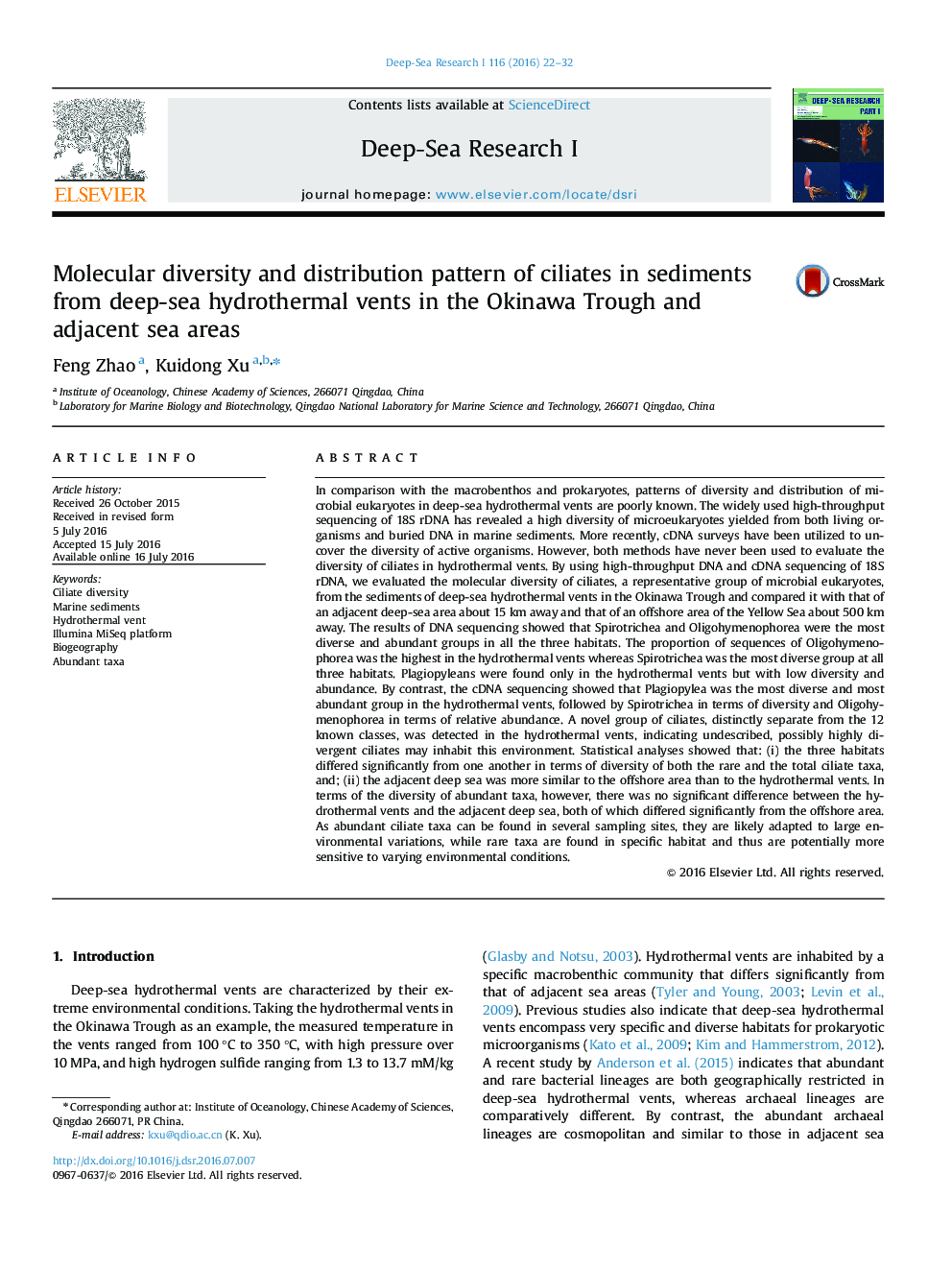| کد مقاله | کد نشریه | سال انتشار | مقاله انگلیسی | نسخه تمام متن |
|---|---|---|---|---|
| 6383330 | 1626314 | 2016 | 11 صفحه PDF | دانلود رایگان |
عنوان انگلیسی مقاله ISI
Molecular diversity and distribution pattern of ciliates in sediments from deep-sea hydrothermal vents in the Okinawa Trough and adjacent sea areas
ترجمه فارسی عنوان
تنوع مولکولی و الگوی توزیع سیلاب ها در رسوبات دریچه های هیدروترمال دریایی عمیق در ناحیه دریاچه اوکیناوا و مناطق مجاور
دانلود مقاله + سفارش ترجمه
دانلود مقاله ISI انگلیسی
رایگان برای ایرانیان
کلمات کلیدی
موضوعات مرتبط
مهندسی و علوم پایه
علوم زمین و سیارات
زمین شناسی
چکیده انگلیسی
In comparison with the macrobenthos and prokaryotes, patterns of diversity and distribution of microbial eukaryotes in deep-sea hydrothermal vents are poorly known. The widely used high-throughput sequencing of 18S rDNA has revealed a high diversity of microeukaryotes yielded from both living organisms and buried DNA in marine sediments. More recently, cDNA surveys have been utilized to uncover the diversity of active organisms. However, both methods have never been used to evaluate the diversity of ciliates in hydrothermal vents. By using high-throughput DNA and cDNA sequencing of 18S rDNA, we evaluated the molecular diversity of ciliates, a representative group of microbial eukaryotes, from the sediments of deep-sea hydrothermal vents in the Okinawa Trough and compared it with that of an adjacent deep-sea area about 15Â km away and that of an offshore area of the Yellow Sea about 500Â km away. The results of DNA sequencing showed that Spirotrichea and Oligohymenophorea were the most diverse and abundant groups in all the three habitats. The proportion of sequences of Oligohymenophorea was the highest in the hydrothermal vents whereas Spirotrichea was the most diverse group at all three habitats. Plagiopyleans were found only in the hydrothermal vents but with low diversity and abundance. By contrast, the cDNA sequencing showed that Plagiopylea was the most diverse and most abundant group in the hydrothermal vents, followed by Spirotrichea in terms of diversity and Oligohymenophorea in terms of relative abundance. A novel group of ciliates, distinctly separate from the 12 known classes, was detected in the hydrothermal vents, indicating undescribed, possibly highly divergent ciliates may inhabit this environment. Statistical analyses showed that: (i) the three habitats differed significantly from one another in terms of diversity of both the rare and the total ciliate taxa, and; (ii) the adjacent deep sea was more similar to the offshore area than to the hydrothermal vents. In terms of the diversity of abundant taxa, however, there was no significant difference between the hydrothermal vents and the adjacent deep sea, both of which differed significantly from the offshore area. As abundant ciliate taxa can be found in several sampling sites, they are likely adapted to large environmental variations, while rare taxa are found in specific habitat and thus are potentially more sensitive to varying environmental conditions.
ناشر
Database: Elsevier - ScienceDirect (ساینس دایرکت)
Journal: Deep Sea Research Part I: Oceanographic Research Papers - Volume 116, October 2016, Pages 22-32
Journal: Deep Sea Research Part I: Oceanographic Research Papers - Volume 116, October 2016, Pages 22-32
نویسندگان
Feng Zhao, Kuidong Xu,
